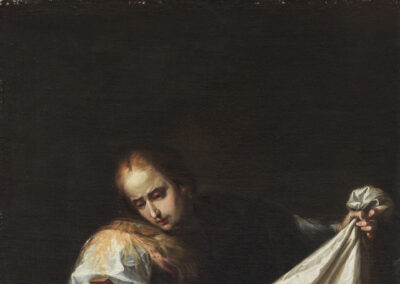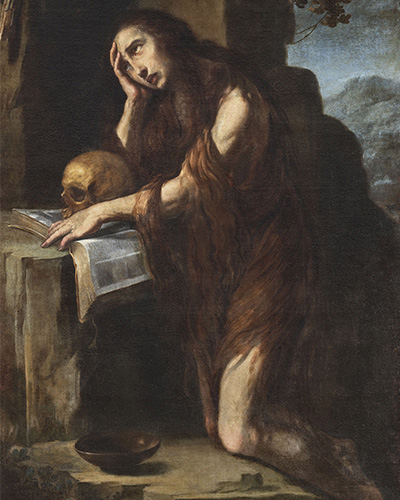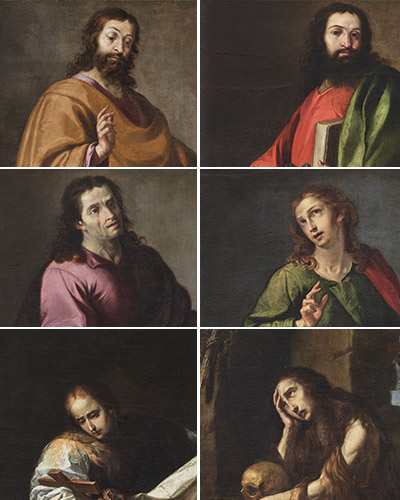Seated with her right arm resting on a stone pillar, the base of which bears the signature and date of its author, the saint is depicted holding a shroud that does not envelop the dead Christ, but shows the symbols of his passion and death: the skull and the cross. These objects rest on a thick book, whose parchment binding allows it to be folded open on her leg. With this iconography, which does not even include the traditional jar of ointment, the artist seeks to evoke exclusively the saint who appears in the four canonical Gospels as the first eyewitness to Christ's Resurrection and to represent her moved and absorbed in meditation on the process of his passion and death.
This iconography conforms to the precepts of the Church, both in terms of the appropriate way of depicting Mary Magdalene and the atmosphere that should preside over the meditation. With regard to the former, he recommended that she should not be depicted nude - as had been done since the late Middle Ages by assimilation of the iconography of Saint Mary of Egypt - but neither should she be dressed in luxurious vestments or adorned with rich jewels. As for the second, Saint Ignatius of Loyola in his Spiritual Exercises recommended meditation in a darkened room, a recommendation Llanos Valdés took advantage of to play with a shadowy light, depicting the saint in a dark interior with a chiaroscuro that only illuminates her face, the shroud and the objects on which her gaze is focused.
This Magdalena is an identical version of another, from a Madrid collection, auctioned in 2020 and dated 1657, so that, of the works signed and dated by Llanos Valdés, this would be the second known, despite which Enrique Valdivieso considers that "... the Magdalena was the first to be signed and dated by Llanos Valdés".shows the painter at the height of his creative maturity and with a clear mastery of composition, drawing and colouring.".
For more information, please see the file of the ensemble to which it belongs by clicking on the image below.




